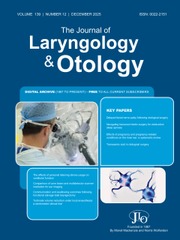Article contents
Dissociation between caloric and head impulse testing in patients with congenital abnormalities of the semicircular canals
Published online by Cambridge University Press: 08 August 2018
Abstract
Dissociation between caloric and head impulse test results in patients with vestibular disorders has been well documented since the introduction of video head impulse testing. Prior to the introduction of video head impulse testing, vestibular diagnostic services relied mainly on caloric testing, and it is now known that the caloric testing shows more positive results than video head impulse testing. A dissipation model was proposed to explain this dissociation.
This paper presents two cases in which caloric testing indicated an absent or significantly reduced response on the horizontal semicircular canal plane but video head impulse testing showed near-normal or normal vestibulo-ocular reflex gain on the same plane.
This report supports the dissipation theory and questions the functional relevance of canal paresis values calculated from caloric test results.
- Type
- Clinical Records
- Information
- Copyright
- Copyright © JLO (1984) Limited, 2018
Footnotes
Dr R S Raghavan takes responsibility for the integrity of the content of the paper
A report of case one was presented at the British Association of Audiovestibular Physicians Annual Conference, 16–17 March 2017, Chesham, UK.
References
- 8
- Cited by


